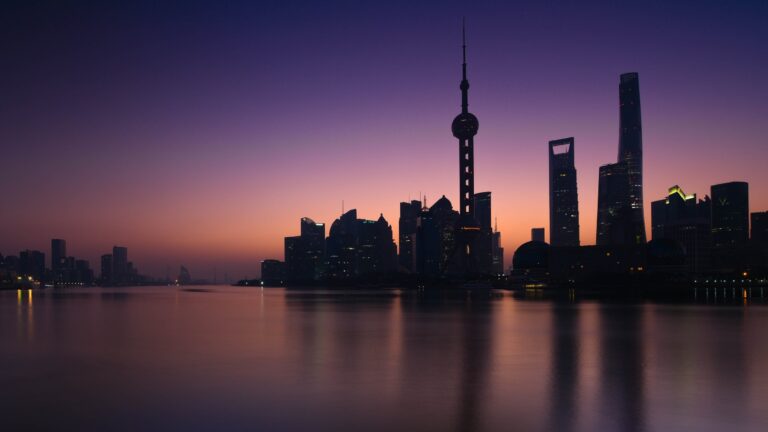This is the final post in a weeklong series relating the experiences and observations of a Chinese house church pastor visiting, evaluating, and learning from an American church. These posts were originally posted in Chinese on his personal blog with the aim of helping and encouraging his fellow pastors.
Worship in Hymns
TPC is not a very traditional church, [so] their worship team has keyboard, drums, piano, bass, and vocals, and their musical quality is fairly high. At least, I felt I was brought quickly into a worshipful state of mind. Scripture readings were sprinkled throughout the service and the prayers quoted from the early church fathers; the entire [service] was Christ-centered and the gospel of salvation was [constantly] on display.
After the worship, I asked two typical questions about the hymns and got satisfactory answers.
Question 1: Under every chair in the chapel, in every room of the church (the office, the meeting rooms, and the classrooms, I would see a thick traditional hymnal or the Chinese-English [bilingual] “Hymns of Life,” but on Sunday, of the ten hymns sung, only four were traditional hymns and the rest were hymns written in the last 5-10 years. When I asked the worship leader [the reason for this] out of curiosity, the following was his answer.
In America, many churches pick sides when it comes to hymn selection, as it is so difficult to find a balance that they would rather just have one [particular] stance. One [such stance] is to only use traditional hymns. The advantage is that this gives us a sense that we are part of the heritage of America’s Christian tradition. The congregations’ parents, grandparents, and [maybe] even great-grandparents sang the same hymns and used the same hymnal. There is no need to say, “Let us sing ‘Rock of Ages,’” but simply, “Let us sing hymn number xxx.” The generations of Christians share a similar life journey, a similar story. This is just as when we get married in China, the bride and groom will show pictures of them standing in front of perhaps Tiananmen Square when they were young to show they have shared things in life. A traditional hymnal is timeless and can establish a special kind of communion with the saints of ages past. Additionally, if everyone is in a PCA church, then they can still sing the same hymns even if they change churches.
The problem with these hymns is that some of them use a form of English that is no longer in use today, and it’s not that much easier to understand than Chinese; I even think that it’s almost like a tongue that nobody could understand if there wasn’t anyone there to act as an interpreter! Also, people from non-Christian backgrounds can’t share in the experience; [for them], these museum pieces cannot establish any sort of goodwill towards the church but gives them a sense of a high barrier of entry. Because of this, some people go towards the other extreme, only choosing contemporary, contextualized hymns.
The problem with only singing contemporary hymns is that we give up on those hundred year old hymns of excellent theological and musical quality; at the same time, we have to admit that songs like “Jesus Is My Superstar” are very shallow, good for stirring emotions but unable to bring people into the worship of God.
So why would TPC choose to mix traditional hymns with contemporary ones? They feel that simply categorizing between traditional and contemporary hymns might be a mistake. [Instead], they believe that worship in hymns has a two-fold responsibility. First, in ministering to the congregation, to bring everyone (believers and non-believers) into an atmosphere of worship. Second, in order to convey the message of the gospel — including praise, the confessing and repenting of sins, and the hope of perfection — we must admit that contemporary hymns tend to be rather weak when it comes to the confession of sins and especially in explaining aspects of the full gospel. In China’s hymns, it is also quite difficult to find a hymn with the theme of “sanctification by grace!” It just so happens that a combination of traditional and contemporary hymns can balance both of these aspects.
In order to avoid newcomers scrambling to find a particular page in the hymnal, they will use the projector, as well as print the score and lyrics in that day’s program. However, they do not put any images other than the lyrics on the projector, because they believe any images or video will, perhaps like the worship of holy images, implant extraneous information.
Question 2: There was a young man whose solo was excellent, almost to the point of a performance, where I was admiring [him rather than the song]. Because of the influence of Mark Dever’s opinion, I believe that singing as a congregation in reflection of [what it will be like] in the new heavens and new earth is more Biblical compared to solos, so I asked the worship leader about it.
Never miss a story
He told me that the song was [the young man’s] own composition (or his own lyrics, I no longer remember the specifics) and an expression of his recent spiritual journey; so solo was a personal testimony. Once I expressed my opinion, what touched me was that TPC’s worship leader said, “You’re right, he did too well and we ran the risk of the congregation admiring [him] rather than worshiping along; we won’t do it again.”
Communion
A friendly reminder – TPC’s pastoral practice as described may not be suitable for churches or brethren who hold certain views; please read this with your elders.
When bringing seekers to the church, I often avoid [doing so] on communion Sundays, because when it is time to receive the elements, the worship leader will often say, “If you are not a believer or not yet baptize, please refrain from taking [the elements.]” And if [communion] is taken by going forward to the pulpit, then it is almost a kind of torture to stay in one’s seat. Many of the brothers and sisters I’ve asked felt this way; they endured until they could be baptized, giving them a great sense of accomplishment. But many seekers will no longer come to the church because of this.
I admit that a church must have boundaries and communion is the time to show who the insiders and outsiders are, so it is true that a seeker will feel left out. How, then, are we to maintain the integrity of the communion table and not have the seekers feel left out and therefore no longer come to church? TPC’s seekers are all friends and family of the members, so how do they not neglect these friends and family or diminish the enthusiasm to bring people to church? As a church that observes communion every Sunday, the following is what TPC did.
After the sermon, Pastor Craig read the typical passage from 1 Corinthians 11, telling the congregation that we have become a group of new peoples by the blood of Jesus Christ, and [so] we use the method taught by Jesus to remember him. All of this is quite familiar to Christians, but at the end he added, “If you have not yet decided to accept this faith, you don’t need to take communion, but Christ’s blood has already been shed for you. I encourage you to earnestly consider whether or not to believe and become part of the holy covenant community.” In maintaining the integrity of the communion table, he calls seekers to believe! Pastor Craig continued, “The elders will be at the front serving the bread and the cup, and we will have ushers directing everyone to come forward. If you are a seeker or not yet baptized, you may come forward along with your friends; however, please refrain from taking the elements. We will pray for you.”
As music played in the background, everyone quietly lined up to receive the bread and the cup. The seekers that had been invited to come more or less went onstage with their Christian friends, and they even interacted with one another quietly while waiting in line. Since TPC is almost entirely composed of family units or groups of friends, there were very few solitary members. When the elders distributed the elements, there was always a natural grouping of 4-6 people surrounding him. At that time, the elder asked the names of those who did not take anything, welcoming them and hoping that they can know Christ better and come to church often. With a few seconds worth of interaction, the seeker can see the sacrament up close and feel completely included; not only is there not the sense of alienation present in China, but also the Lord’s Supper is not thrown into chaos.
I admit that this is a bold experiment and practice, but they do not do it recklessly, rather with deep theological thought and an example of contextualization worth considering. In Boston’s Citylife Presbyterian Church I discussed this with Pastor Um and he told me that he will say something similar during communion: “If you have not yet dedicated yourself to this faith, you do not need to receive the elements, but you need Jesus Christ!”
As we struggle with how to be friendlier towards seekers during communion, some simple words and practices will turn this sacrament into a good chance to witness the gospel, live out the communion of saints, and call seekers to Christ. China’s house churches have never faced such a vast field of harvest for the gospel. Of course, we hope to keep seekers in church, lead them to believe, train them to become disciples, send them to plant churches. But is the church ready to take this first step?
Finally, I want to complement the Presbyterian church, whom I admire. The attention TPC has placed on the seekers can easily be misunderstood as a finely managed user experience. Since this is something that the members of the church can do well, this is a temptation for the church, as it is easy to see and quantify those who are brought into the church because of changes in ministry. [But] if these details become the emphasis of the church [to the point] that the pulpit neglects the word of God, then we have put the cart before the horse. The Presbyterian church allows the pastors to watch over one another, be accountable to each other, ensuring that the message from the pulpit stays true to the Bible and help contextualization be built on a focus on the gospel, reducing the chances of becoming an “Emergent Church.”
Wang Jianguo is the collective pseudonym for a group of Chinese house church pastors writing and thinking critically about issues related to the spread of Christianity in their nation. They are committed to preaching a grace-centered gospel, developing resources for the church, and loving China’s urban centers.































